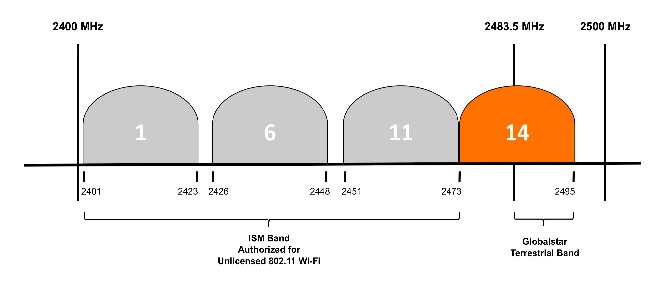Yesterday the FCC received an application for experimental radio license from the Jarvinian Wireless Innovation Fund. Among other activities, the fund is working with Globalstar in its effort to establish a so-called terrestrial low-power service (TLPS). Globalstar petitioned the FCC to create such a service last November. The idea is to take the upper 2.4 GHz unlicensed band that isn’t now available for Wi-Fi, combine it Globalstar’s terrestrial-use spectrum, and create a new service operating on 2473-2495 MHz. This corresponds to IEEE 802.11 (Wi-Fi) channel 14, which can’t be used in the U.S. as it overlaps with Globalstar’s spectrum. Unlike Wi-Fi, TLPS would be managed to control interference.
The experiment would take place in Cambridge, Massachusetts in the same band proposed for TLPS. Equipment would include 50 Linksys WRT54GL access points, 10 Ubiquity UniFi access points, 10 Ubiquity XR2 client cards, and 10 Ubiquity SR-71-12 client cards, all of which support parts of IEEE 802.11. Jarvinian says it will make firmware modifications to the devices to enable operation on the test frequencies.
There’s an exhibit with supporting technical information. Some of it similar to that included as technical support for Globalstar’s petition. Jarvinian says it intends to test the following:
- Noise and interference characteristics of the 2473-2495 MHz band
- The efficacy of TLPS including comparisons with IEEE 802.11. Range, speed, and service quality would be evaluated.
- Basic methods for control of TLPS operation using a simple network operating system
- The potential for TLPS regulatory compliance with existing devices by enabling the test band in existing low-power devices, such as tablets and smartphones, and measuring for compliance with existing out-of-band emission rules
The FCC isn’t satisfied with Jarvinian’s application entry for the emission designator, and has asked for more information. OFDM is listed as the modulating signal. Effective radiated power is specified as 4 watts.
